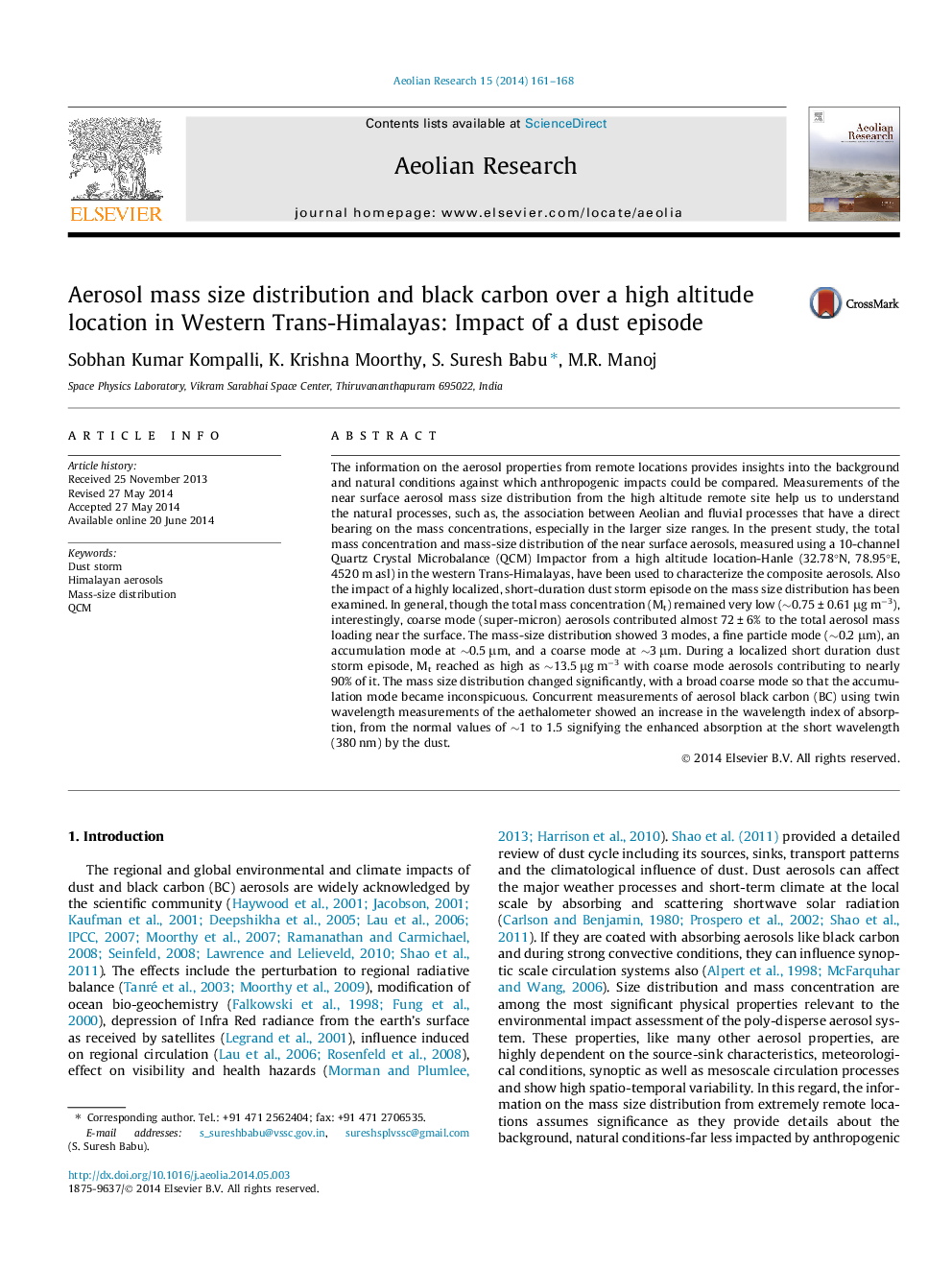| Article ID | Journal | Published Year | Pages | File Type |
|---|---|---|---|---|
| 6426353 | Aeolian Research | 2014 | 8 Pages |
â¢Aerosol mass size distribution measurements from high-altitude Himalayas.â¢Very low aerosol mass loading with dominant coarse mode contribution (>70%).â¢Drastic increase in aerosol mass and UV absorption during a dust episode.
The information on the aerosol properties from remote locations provides insights into the background and natural conditions against which anthropogenic impacts could be compared. Measurements of the near surface aerosol mass size distribution from the high altitude remote site help us to understand the natural processes, such as, the association between Aeolian and fluvial processes that have a direct bearing on the mass concentrations, especially in the larger size ranges. In the present study, the total mass concentration and mass-size distribution of the near surface aerosols, measured using a 10-channel Quartz Crystal Microbalance (QCM) Impactor from a high altitude location-Hanle (32.78°N, 78.95°E, 4520 m asl) in the western Trans-Himalayas, have been used to characterize the composite aerosols. Also the impact of a highly localized, short-duration dust storm episode on the mass size distribution has been examined. In general, though the total mass concentration (Mt) remained very low (â¼0.75 ± 0.61 μg mâ3), interestingly, coarse mode (super-micron) aerosols contributed almost 72 ± 6% to the total aerosol mass loading near the surface. The mass-size distribution showed 3 modes, a fine particle mode (â¼0.2 μm), an accumulation mode at â¼0.5 μm, and a coarse mode at â¼3 μm. During a localized short duration dust storm episode, Mt reached as high as â¼13.5 μg mâ3 with coarse mode aerosols contributing to nearly 90% of it. The mass size distribution changed significantly, with a broad coarse mode so that the accumulation mode became inconspicuous. Concurrent measurements of aerosol black carbon (BC) using twin wavelength measurements of the aethalometer showed an increase in the wavelength index of absorption, from the normal values of â¼1 to 1.5 signifying the enhanced absorption at the short wavelength (380 nm) by the dust.
Graphical abstractDownload full-size image
